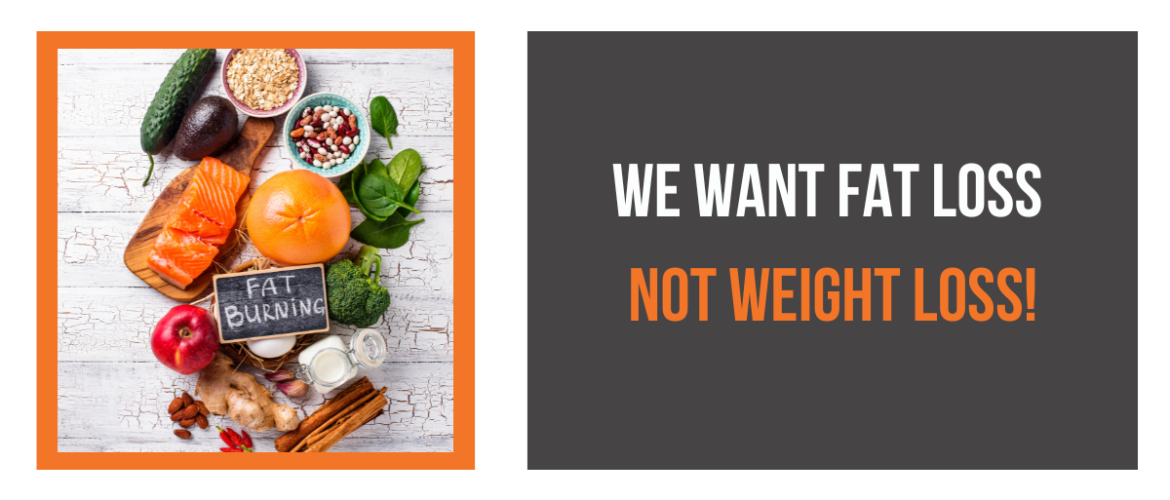GET IN TOUCH TODAY!
"*" indicates required fields

As fitness professionals, we’re not just responsible for educating our clients—we lead by example. Our own training, nutrition, and lifestyle habits shape how our clients perceive fat loss, muscle maintenance, and overall health. But let’s be honest: Fat loss is one of the biggest challenges our clients face, as well as how to lose fat without losing muscle. Many:
❌ Cut calories too aggressively and sacrifice muscle.
❌ Do excessive cardio and lose strength.
❌ Fail to prioritise protein and progressive overload.
And sometimes, we make these mistakes ourselves, especially when balancing a busy coaching schedule with our own training.
This guide will help you:
Let’s dive in.
Want to lose fat without losing muscle? In this episode of the Storm Fitness Academy Podcast, we break down the most effective strategies for fat loss while preserving strength and performance.
Muscle is the engine that drives fat loss
As trainers, we preach resistance training, but are we making sure our clients prioritise it during fat loss phases? Or worse—are we guilty of shifting our focus to cardio when we’re cutting?
Why strength training matters for fat loss:
✅ Helps retain muscle while in a calorie deficit.
✅ Increases resting metabolic rate—more muscle burns more calories.
✅ Enhances fat-burning through excess post-exercise oxygen consumption (EPOC).
Pro Tip for Trainers:
Make sure you’re also lifting consistently during your own fat loss phases. Your ability to model muscle retention while cutting will inspire your clients to follow suit.
Slow and steady wins the race
We all know a calorie deficit is required for fat loss, but too many clients (and sometimes, we trainers) go too aggressive, leading to muscle loss.
Trainer Takeaway:
Educate your clients that rapid fat loss isn’t sustainable. If they lose strength or feel sluggish, their deficit may be too large. And let’s not fall into the trap of extreme dieting ourselves—we must prioritise long-term sustainability.
The foundation of fat loss success
Protein is non-negotiable in fat loss phases. It:
✅ Preserves lean muscle mass.
✅ Keeps clients fuller for longer (reducing cravings).
✅ Boosts post-exercise recovery.
Trainer Challenge:
Track your own protein intake—are you actually hitting your targets? If not, it’s time to adjust before expecting clients to do the same.
Low-carb isn’t always better
We’ve all had clients who say, “I’m cutting carbs to lose fat.” But cutting carbs too low can:
❌ Reduce training performance.
❌ Increase cortisol and muscle breakdown.
❌ Lead to lower energy and motivation.
Trainer Takeaway:
If you’re running low on energy during your sessions, assess your carb intake. Your clients look to you for guidance—make sure you’re fueling yourself properly too.
♂️ More isn’t always better
Yes, cardio helps with fat loss, but too much can backfire. The key is to use it strategically.
Trainer Reminder:
Don’t overdo cardio at the expense of resistance training—neither for yourself nor for clients.
Muscle is built outside the gym
We often push our clients to prioritise recovery, yet many trainers fail to take their own advice. Lack of sleep and excessive stress = muscle loss and fat retention.
✅ 7-9 hours of quality sleep per night.
✅ Manage stress (meditation, nature walks, downtime).
✅ Stay hydrated and fuel properly.
Trainer Action Item:
Evaluate your own recovery habits—are you getting enough sleep, or are late-night client messages taking priority?
Fat loss takes time, muscle takes work
Clients need objective ways to measure progress beyond the scale. And so do we.
Trainer Insight:
If you’re losing muscle during a cut, adjust your deficit, protein intake, or training intensity. Lead by example.
✅ Keep resistance training a priority.
✅ Ensure protein intake is high enough for muscle retention.
✅ Don’t cut carbs too aggressively.
✅ Use cardio wisely.
✅ Track progress objectively.
By implementing these science-backed strategies, you’ll not only help your clients but also embed these methods into your own routine, ensuring you lead from the front.
Subscribe to our blog and podcast for more evidence-based coaching insights.
Take your career to the next level—enrol in one of our Storm Fitness Academy courses today!
Fill out the form below if you’d like us to contact you and help you take your coaching career to the next level!
"*" indicates required fields